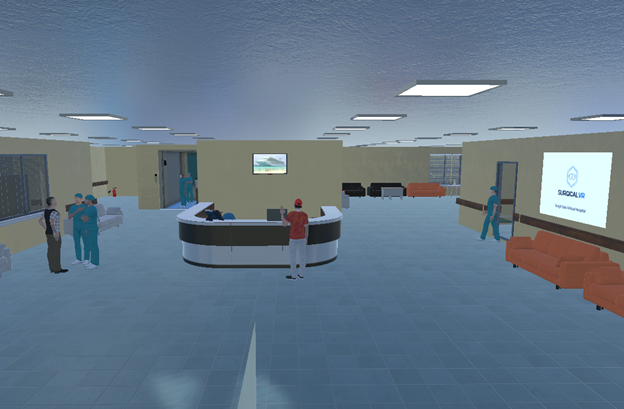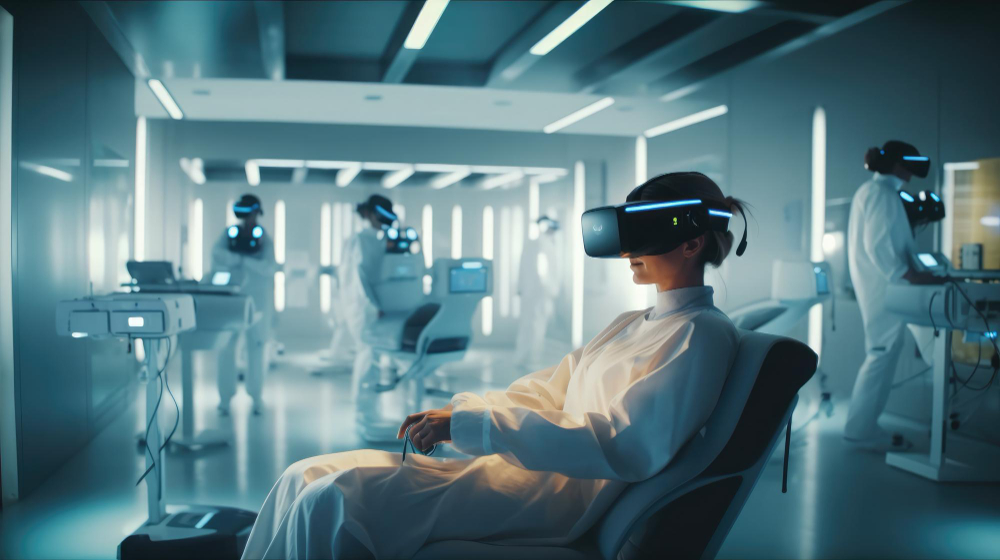The concept of a "Virtual Hospital" powered by Extended Reality (XR) technology is revolutionizing medical training and education. XR, encompassing Virtual Reality (VR), Augmented Reality (AR), and Mixed Reality (MR), provides an immersive environment for simulating real-world medical scenarios, offering trainees unparalleled opportunities to learn, practice, and refine their skills without the constraints of a physical hospital. This article explores the implementation, advantages, challenges, and future implications of XR technology in creating virtual hospitals for medical trainees.
Implementation of XR in Virtual Hospitals
Virtual hospitals are sophisticated XR platforms designed to mimic the complex dynamics of real healthcare settings. These platforms integrate VR, AR, and MR to create comprehensive, interactive simulations of medical procedures, patient interactions, and hospital workflows. Trainees can navigate through virtual wards, interact with patient avatars, perform diagnostic tests, and practice emergency responses, all within a controlled, virtual environment.
VR in Clinical Training
VR technology plays a crucial role in clinical training within virtual hospitals. It immerses trainees in a completely virtual world, allowing them to experience the pressure and challenges of medical emergencies or complicated surgical procedures. High-fidelity simulations include realistic anatomical models and physiological responses, enabling trainees to practice and repeat procedures until they achieve proficiency.
AR and MR in Enhancing Realism
AR and MR technologies enhance the realism of virtual hospitals by superimposing digital information and interactive models onto the physical world. This capability is particularly useful for procedural training, where trainees can visualize and manipulate 3D models of organs, use augmented tools and devices, and receive real-time feedback on their techniques. MR facilitates collaborative learning, allowing multiple users to interact with the same virtual environment simultaneously, fostering teamwork and communication skills essential for hospital settings.
Advantages of XR in Medical Training
- Risk-Free Learning Environment: Virtual hospitals offer a safe environment for trainees to make mistakes, learn from them, and perfect their skills without risking patient safety.
- Access to Diverse Scenarios: Trainees can experience a wide range of medical scenarios, including rare and complex cases, enhancing their preparedness for real-world challenges.
- Enhanced Learning Outcomes: The immersive nature of XR technology improves engagement, retention, and understanding of medical knowledge and procedures.
- Scalability and Accessibility: Virtual hospitals can be accessed remotely, breaking geographical barriers and enabling consistent training opportunities for medical professionals worldwide.

Hospital Simulation in SurgX Platform
Challenges of Implementing XR in Virtual Hospitals
Despite the numerous benefits, several challenges hinder the widespread implementation of XR technology in virtual hospitals:
- High Development and Maintenance Costs: Creating realistic XR simulations requires substantial investment in software development, hardware, and ongoing content updates.
- Technical Limitations: Issues such as latency, image resolution, and user interface design can impact the effectiveness of training and user experience.
- Integration into Medical Curricula: Adapting existing medical training programs to incorporate XR technology demands significant effort from educators and institutions.
- Accessibility and Equity: The cost and technological requirements of XR platforms may limit access for trainees and institutions with fewer resources.
Future of XR in Medical Training
The future of XR technology in medical training is promising, with continuous advancements addressing current limitations and expanding the possibilities of virtual hospitals. Innovations in hardware, such as lighter, more affordable headsets with higher resolution, along with advances in software that enable more realistic simulations and AI-driven patient avatars, are on the horizon. These developments will enhance the realism and effectiveness of virtual hospitals, making them an integral part of medical education.
The integration of global health scenarios and interdisciplinary training in virtual hospitals could also broaden the scope of medical education, preparing trainees for a wide range of global health challenges. Furthermore, collaboration between technology developers, medical educators, and healthcare institutions will be crucial in standardizing XR training platforms, ensuring their relevance, effectiveness, and accessibility.
Future of XR in Medical Training
The future of XR technology in medical training is promising, with continuous advancements addressing current limitations and expanding the possibilities of virtual hospitals. Innovations in hardware, such as lighter, more affordable headsets with higher resolution, along with advances in software that enable more realistic simulations and AI-driven patient avatars, are on the horizon. These developments will enhance the realism and effectiveness of virtual hospitals, making them an integral part of medical education.
The integration of global health scenarios and interdisciplinary training in virtual hospitals could also broaden the scope of medical education, preparing trainees for a wide range of global health challenges. Furthermore, collaboration between technology developers, medical educators, and healthcare institutions will be crucial in standardizing XR training platforms, ensuring their relevance, effectiveness, and accessibility.
To Sum Up
The Virtual Hospital, enabled by XR technology, represents a transformative approach to medical training, providing an immersive, safe, and comprehensive learning environment for simulating real-world medical scenarios. As the technology evolves and becomes more integrated into medical education, it promises to enhance the quality of healthcare training significantly, preparing a new generation of medical professionals equipped with a higher level of skills and experience. Despite the challenges, the potential of XR technology in revolutionizing medical training is undeniable, paving the way for a future where virtual hospitals are a standard component of medical education worldwide.


